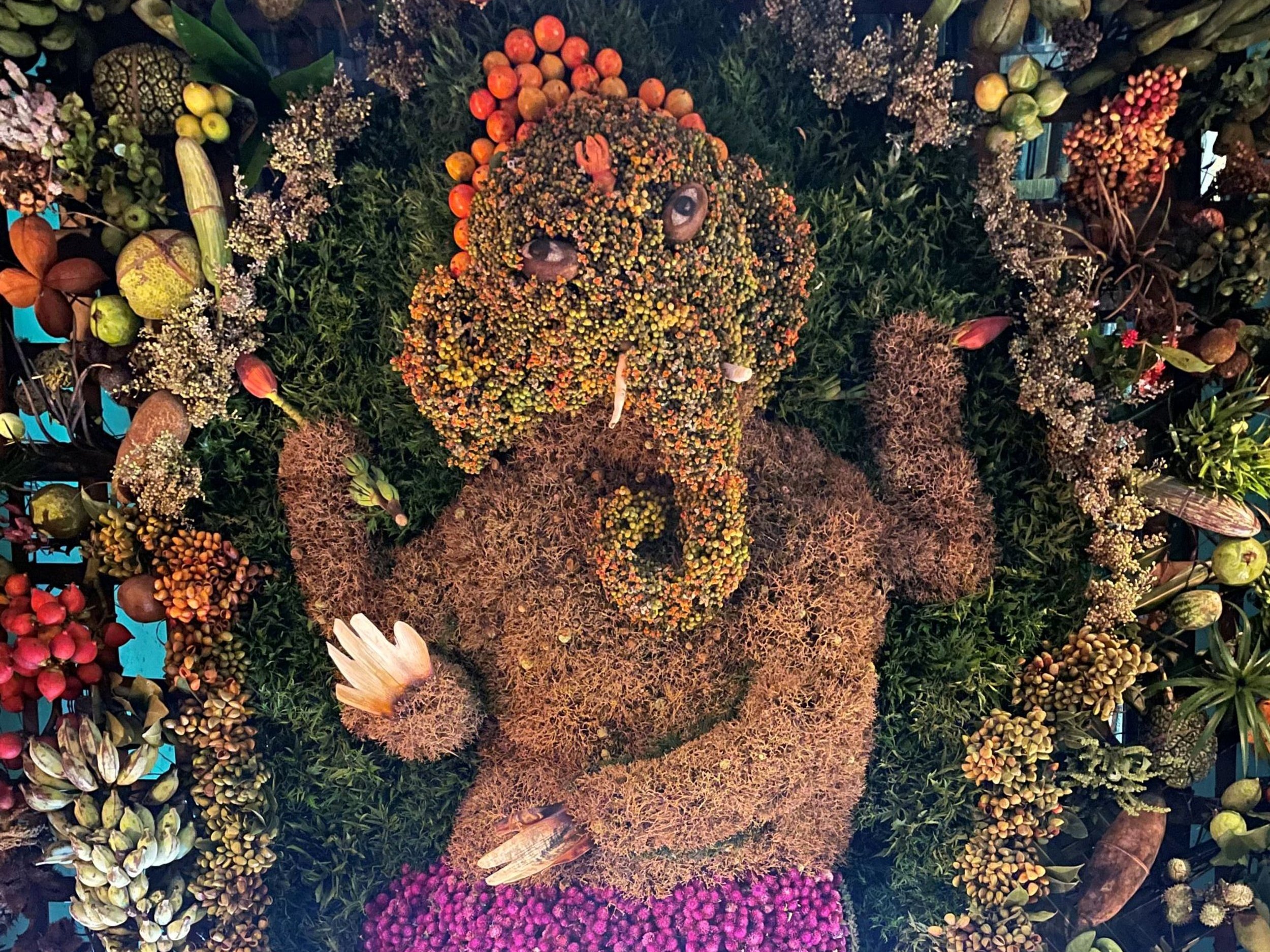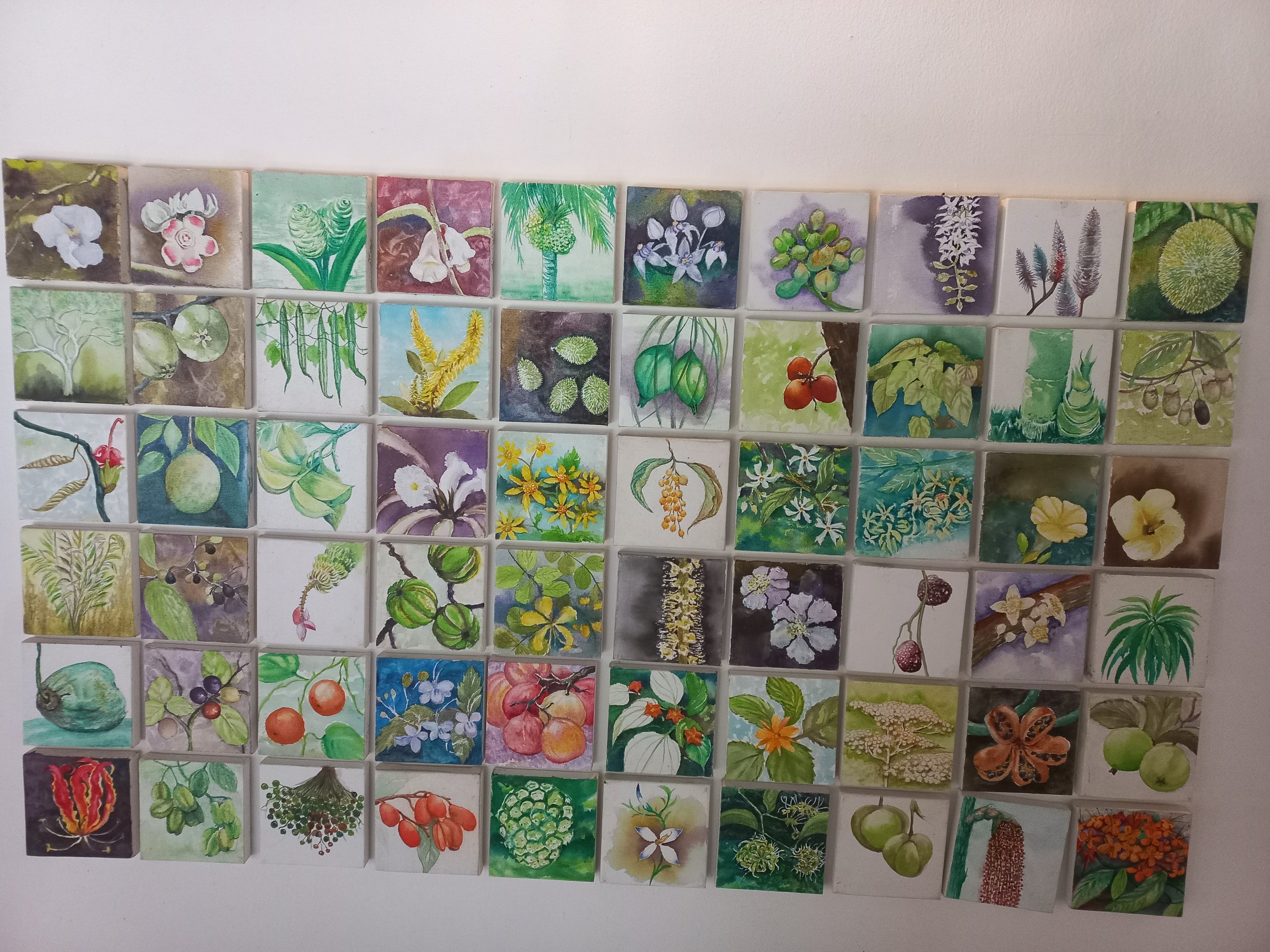In Goa, Ganesh Chaturthi is a Celebration of Nature

In Goa, Chaturthi is a festival that celebrates nature and the bounty of the land. This is evidenced in the matoli, a wooden structure that is decorated with seasonal biodiversity. Arti Das explores this unique cultural practice in Goa.
The real Goa is seen in its villages, especially during its feasts and festivals, represented through a unique natural heritage.
In a few days from now, on September 7, Goans will celebrate one of the season’s biggest festivals—Ganesh Chaturthi, locally known as ‘Chavoth.’ Celebrated mainly by the Hindu community, on this day, devotees bring an idol of Ganesh home, where it is venerated either for one and a half days, or five, seven, nine, or 11 days.
This is the time of year when the rains have subsided, and the earth has regenerated. This is evident in the flowering of wild flowers on plateaus, and wild creepers taking over every surface. All of this bounty is reflected in our festivals, especially Ganesh Chaturthi.
Every aspect of this festival is a celebration of nature in its truest form — the idol is made from mud from the river beds, and thus when the idol is immersed after the festivities, it returns to its original source.
The eve of Ganesh Chaturthi is celebrated as ‘Tai’. It is the worship of goddess Parvati, mother of lord Ganesh. She is represented through wild flowers and leaves. In North Goa predominantly, yellow flowers known as ‘harna’ bloom on hillocks at this time of the year, symbolizing the goddess. In some villages, she is represented by a bunch of wild flowers and leaves. All these leaves are then wrapped in a bigger leaf of kasal or alocasia. She is worshipped along with lord Mahadev who is represented by a coconut (also wrapped in kasal leaves). It is a reminder that this festival is rooted in the worship of nature in its truest form.
Shiva and Parvati are created out of kasal leaves.
Another aspect which I began to understand more intimately as I studied Goa’s flora, is the matoli. The matoli is a wooden canopy suspended above the Ganesh idol, decorated with a variety of seasonal bio-diversity — fruits, vegetables, leaves, seeds, pods, shoots, herbs, tubers, etc. They are broadly four categories — edible, medicinal, decorative, and toxic — wild flowers, seed pods, wild fruits, and more.
For many urban dwellers like myself, matoli items remain unfamiliar territory. It was only when I moved to a village, Mashem, in Goa’s southernmost taluka of Canacona, that I realized the meaning and worth of the matoli. In Goa’s remote villages, matoli items are not brought from the market, but are sourced from backyard forests. The collection for matoli starts just a couple of days before Chaturthi, to be fresh for display. This practice in the Goa and Konkan region, is a celebration of seasonal biodiversity, and also a means to study our ecology.
It is a storyboard of information of the region’s flora for the next generation. “Matoli is an excellent exhibition of the seasonal biodiversity. Through this tradition, the people become familiar with the region’s ethnobotany,” says environmentalist Rajendra Kerkar who has documented this tradition for many years now. He points to the display of toxic items as way to inform people of such poisonous flora.
Matoli items also change according to the region; in coastal areas, there will be more items related to palms, and in hinterlands, more forest species. There is no prescribed number of items, but they must always include areca nuts and coconuts. In some communities, coconut is placed first on matoli and in others, it is placed last, a symbol of the importance of this fruit and tree. All these items are placed with a bunch of mango leaves, tied with strings made from banana fiber or the bark of ‘kevan’ (Helicteres isora).
Among the wild inclusions, some of which are key to the matoli, are ‘kangla’ (Celastrus paniculatus,) its infructescence, ‘nagalkudo’ (Tabernaemontana alternifolia), its pods, ‘matti’ (Terminalia elliptica) and it’s fruits, ‘kevan,’ its twig with flowers, fish tail palm (Caryota Urens), it’s inflorescence and leaves, to name just a few. These plants have strong socio-cultural importance in Goa.
In this season, there is also an abundance of cultivated vegetables and fruits like okra, cucumber, breadfruit, hog plums, pineapple, chibud (musk melon), toring (pomelo), and kokan dudhi (bottle gourd). These too form a part of the matoli. It also includes wild edibles, like fruits of fagla (Momordica dioica), tefla (Zanthoxylum rhetsa), wild edible leaves of aakur or wild fern, taikilo (cassia tora), tero (colocasia esculenta), fruits of raan karmal (Dillenia indica).
Matoli by Shrikant Satarkar and family, Priol. It depicts Ganesha in Natraj pose. Photo credit: Sanket Naik
A normal matoli has at least 30 to 50 items but often times, even crosses 300. These matolis are usually found in the forested areas of Canacona, Sanguem, Ponda and Sattari taluka. And now, with the Matoli competition organised by the Department of Art and Culture of Goa, more people participate, and bring in more variety. These matolis are more stylized and aesthetic; the design features a deity or a geometric pattern in the centre, using all the matoli items. Shrikant Satarkar from Priol has been making such matolis for around 30 years now. His process begins with a survey of the forested areas nearby, at least 15 days ahead, to check which flowers, fruits, and shoots are available, and accordingly then plan the design. He, together with his joint family of 30, came together and made this matoli within just two days.
Nave or the offering of first paddy harvest on second day of Chaturthi
Along with matoli, there’s also the tradition of the first harvest of the season. On the second day of Chaturthi, the first paddy harvest called ‘Nave’ is offered to Lord Ganesh. Along with matoli and Nave, there’s also a tradition of offering 21 types of wild and cultivated leaves to lord Ganesha. Most of these leaves are highly medicinal, locally termed as ‘patri’ and wrapped in ‘Arjun’ (Sterculia urens) tree leaves. The number 21 is considered auspicious for Ganesh puja as there’s also a tradition of offering 21 strands of durva (Cynodon dactylon).
Now such bundles are easily found in Chaturthi specialty markets but traditionally, the one who performs the puja was to collect these 21 different leaves, to be offered with the 21 names of Ganesha. This is an affirmation of rich the biodiversity of the Goa-Konkan region, and of the traditional understanding of the medicinal properties of plants.
However, given present factors such as climate change and rampant hill cutting in Goa, it becomes a challenge to source this wild flora. Many complain that every year, foraging these leaves and wild plants is becoming harder, as the forest cover is disappearing at an alarming rate. Also, the recent commercialization of these matoli items is putting tremendous pressure on our forests. The markets of Panaji, Margao, and the famous Banastarim market near Ponda, are overflowing with these items.
An array of Matoli item for sale at Banastarim market. Photo credit: Ashish Prabhgaonkar
Divesh Gadekar’s collage of matoli items, which was part of the group exhibition titled Time, Space, Memory decoding contemporary video at Sunaparanta Goa Centre for the Arts, 2022
Suryakant Gaonkar, whose recent Marathi book titled, ‘Gomantakatil Pushpavaibhav,’ lists 150 species of trees and plants found in Goa’s forests. He believes firmly that one has to be mindful while foraging. “Nowadays our markets are flooded with this forest produce for matoli. Most of the time all is not sold, and the excess results in wastage.” He suggests using just a few items of a particular species, just as a specimen, rather than displaying a whole bunch of fruits of one species.
The whole festival of Ganesh Chaturthi is about reaffirming our natural wealth and celebrating it. But with the loss of green cover and a lack of awareness of our own backyard forests, we risk losing the essence of such festivals.
Arti Das is a freelance journalist who writes about the art, culture and ecology of Goa.
ALSO ON GOYA

















